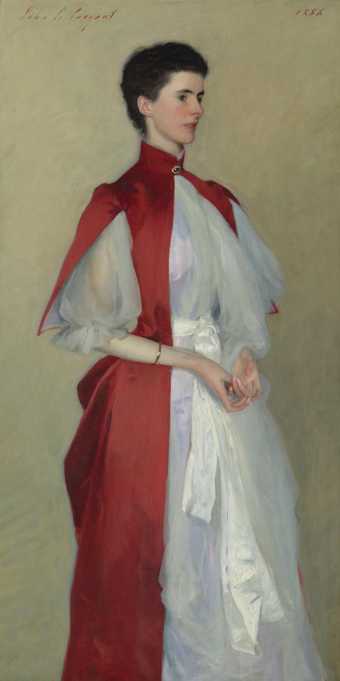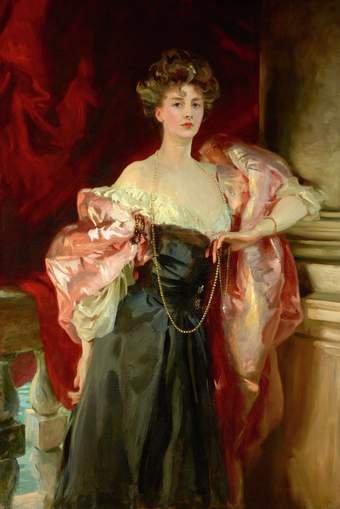
John Singer Sargent, Lady Helen Vincent, Viscountess d'Abernon, 1904
Collection of the Birmingham Museum of Art, Alabama; Museum purchase with funds provided by John Bohorfoush, the 1984 Museum Dinner and Ball, and the Museum Store. Photo: Sean Pathasema
John Singer Sargent used fashion as a powerful tool to express identity. He worked like a stylist and collaborated with his sitters to craft the images in his paintings. Their outfits were key: he regularly chose or manipulated their clothes to bring out the unique threads of their personalities. Let’s look at 5 of these in more detail:
Madame X (1883–1884)
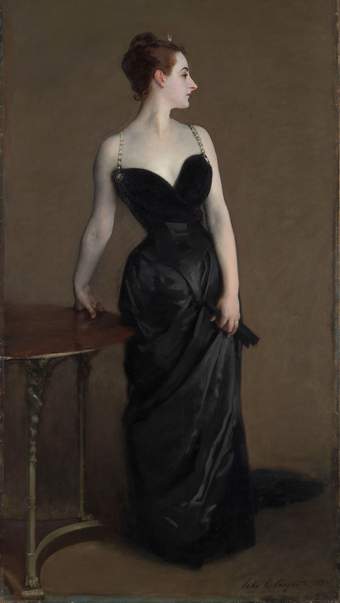
John Singer Sargent, Madame X 1883-4. Lent by The Metropolitan Museum of Art, Arthur Hoppock Hearn Fun, 1916
In one of Sargent’s most famous works, Madame X (1883-1884), he paints Virginie Gautreau, a beautiful American socialite. She wore a simple black evening gown with a heart-shaped velvet bodice, diamond straps and a black satin skirt. The painting was a deliberate collaboration between Sargent, a rising painter at the time and Gautreau – they both wanted to be welcomed into high French society.
Instead Gautreau’s daringly dropped shoulder strap caused an unexpected scandal. He repainted the strap so it sat firmly on her shoulder but soon left Paris for London, thanks to the controversy. However, Sargent later said the portrait was ‘the best thing I’ve ever done.’
Dr. Pozzi at Home (1881)
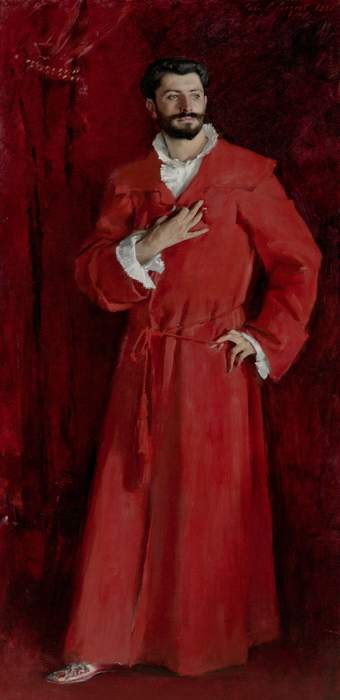
John Singer Sargent Dr. Pozzi at Home 1881 The Armand Hammer Collection, Gift of the Armand Hammer Foundation. Hammer Museum, Los Angeles.
Surgeon Samuel-Jean Pozzi was a groundbreaking gynaecologist living in France. He was also known for his love of art and collecting. Sargent greatly admired him, and it shows in this striking portrait. In Dr. Pozzi at Home (1881) he depicts the young, bearded man with a graceful pose in a crimson regal gown and Turkish slippers.
The choice of vivid hues stands out given Pozzi’s work in women’s health. Notice the detail Sargent paid to Pozzi's elegant hands, which reflect his surgical expertise. The luxurious curtains behind him adds to the sense of his charm and style.
Vernon Lee (1881)
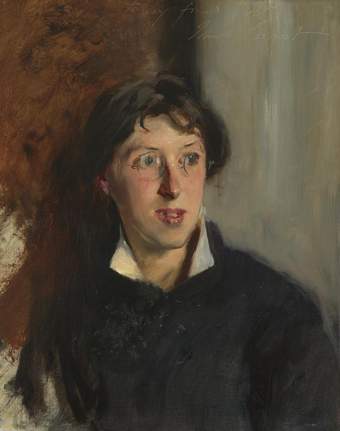
John Singer Sargent
Vernon Lee
(1881)
Tate
Sargent also used clothes to challenge traditional gender norms, as seen in Vernon Lee (1881). Vernon Lee was the pen name of Violet Paget, a highly respected British writer. Sargent paints Paget in ‘masculine’ clothes that men might typically wear: her hair pulled back with a tailored, starched collar.
The collar and round glasses belonged to Paget, but Sargent deliberately chose to feature these outfit details to convey her identity and personality. Sargent painted this in a single three-hour sitting during a visit to London. Lee described herself as ‘rather fierce and cantankerous’ in the portrait.
Ellen Terry as Lady Macbeth (1889)
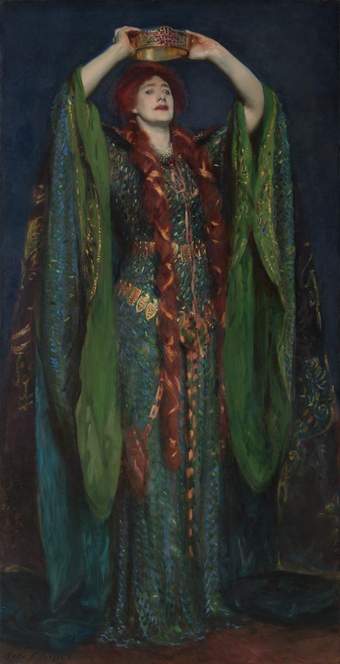
John Singer Sargent
Ellen Terry as Lady Macbeth
(1889)
Tate
Actress Dame Ellen Terry is shown here as Lady Macbeth. Sargent, struck by her appearance during a performance in 1888, convinced her to pose for him. He came up with her dramatic stance, capturing the intensity of the moment after Duncan's murder in the Shakespeare tale.
In the portrait Sargent instructed Terry to victoriously place a crown on her head (this did not happen in the original play) to showcase the intensity of her character and presence as an actor. Her spectacular gown was made using green silk, blue tinsel, and thousands of beetle wings to make Terry resemble a serpent. Sargent painted the gown's shimmering, shifting colours using bright dabs of intense paint pigment.
Portrait of Ena Wertheimer: A Vele Gonfie (1904)
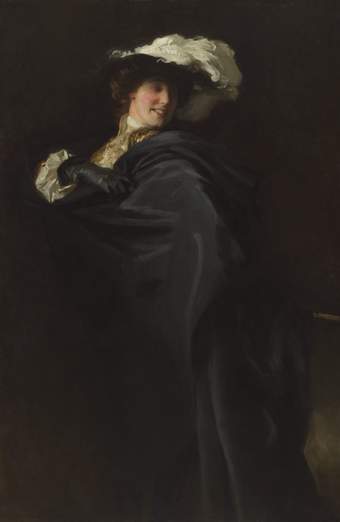
John Singer Sargent Portrait of Ena Wertheimer: A Vele Gonfie 1904 Tate Bequeathed by Robert Mathias 1996
Ena Wertheimer received this striking portrait as a wedding present from her father, a British art dealer of German-Jewish descent. Sargent paints Wertheimer as she was known to others, lively and joyful – Sargent chose to show her playfully wearing the cloak of the Order of the Garter, whose members are appointed by the monarch. At the time the Order only allowed men to join, apart from the queen.
She dramatically looks over her left shoulder, wearing a striking plumed hat, a glove and black fabric draped to look like a voluminous cloak. The Italian subtitle means ‘in full sail’, referring to her billowing outfit. To make it look like she has a sword, Sargent also asked Wertheimer to hold a broomstick underneath her cloak (another nod to her cheeky personality – she was said to have a great sense of humour). It can be seen sticking out on the right of the painting.
Sargent and Fashion is on at Tate Britain until July 7 2024

